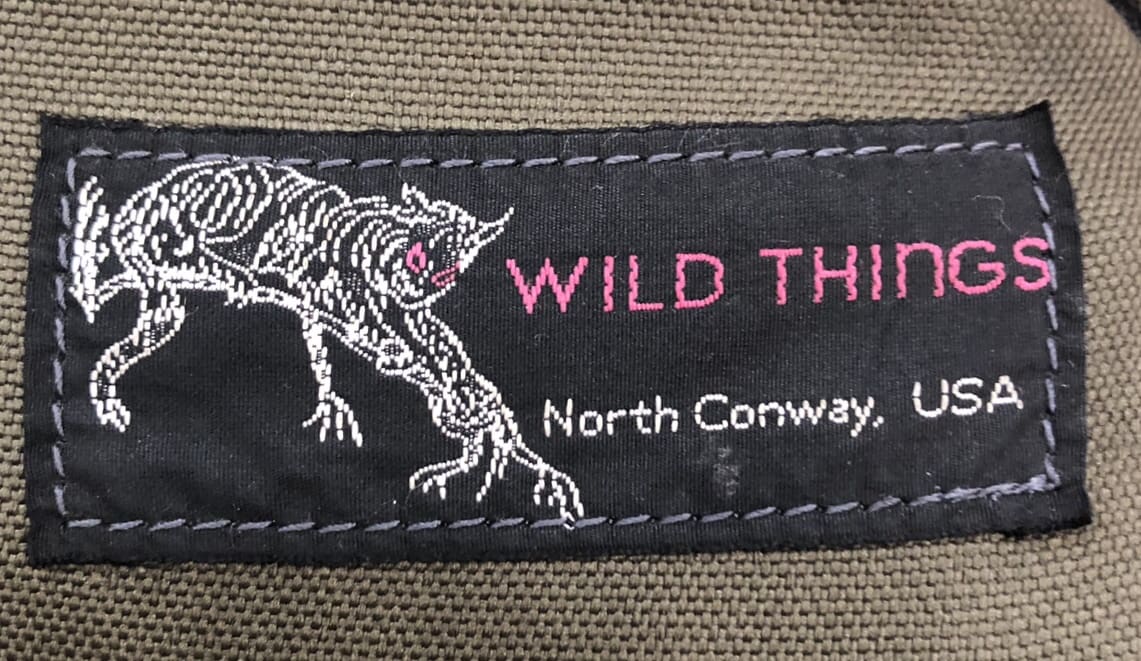
During a brief meeting with the founder of Wild Things, the legendary Marie Meunier, earlier this week, she showed me the original Wild Things logo.

During a brief meeting with the founder of Wild Things, the legendary Marie Meunier, earlier this week, she showed me the original Wild Things logo.
The M1 Garand is an icon for the two million plus soldiers that served in WWll. Steinel Ammunition’s 30-06 M1 Garand M2 Ball ammo is designed to give your rifle back its glory days.
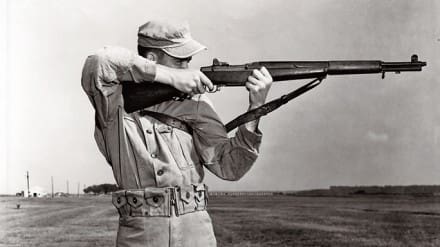
Twinsburg, Ohio (July 2019) – When 16 million Americans were called to serve America and over two million soldiers sent to the European or Pacific theaters during World War ll, the M1 Garand rifle was by their side. This legendary fighting platform still creates waves of nostalgia through our military veterans, military historians and firearms enthusiasts. The M1 Garand was as versatile as it was reliable, able to operate through the freezing temperatures during the Battle of the Bulge to the hot and humid Pacific Rim Islands, easy to use for a green recruit and accurate enough for a skilled sniper.
To this day, the M1 Garand continues to hold a place of honor in our collective American memories. Fans of the M1 Garand continue to participate in a number of online groups and associations from the Garand Collectors Association to the Civilian Marksmanship Program and their popular competitions including high power rifle, as-issued military rifle, vintage sniper rifle, and more.
The M1 Garand rifle was developed by John Cantius Garand while working on semi-auto rifle designs at Springfield Armory. After extensive Army testing, the Garand was adopted by the US Military. What made this the US Military’s sweetheart rifle was its simple design with a unique gas system, self-loading, accurate rapid-fire capability, and a rear peep sight that made for quick and easy acquisition of fast-moving targets. The M1 Garand was issued in the 30-06 caliber; the then military’s newest round that was a vast improvement on the former military issue 30-03. The 30-06 was a lighter weight spitzer style bullet capable of farther ranges and less felt recoil.
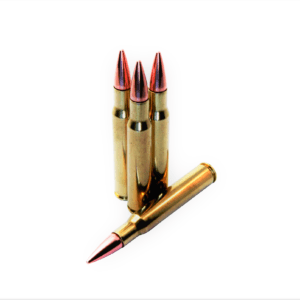
Steinel Ammunition’s 30-06 M1 Garand M2 Ball is a 150-grain FMJ suitable for all 30-06 chambered rifles but is especially optimized for those prized M1 Garand rifles still in operation in the field or on the range. Purchasing surplus ammunition can be risky to both the customer and the rifle and handloading special 30-06 to accommodate the age of these M1 granddaddies can take some time, tools and experience. It’s also common knowledge in the M1 Garand crowd that use of high-powered hunting loads can bend the operating rod rendering a beloved piece of history, unusable. At 2,780 FPS, Steinel’s 30-06 M1 Garand rounds ensure reliable feeding, performance, and accuracy without undue wear and tear on the family heirloom.
Steinel Ammunition’s 30-06 M1 Garand M2 Ball 150 gr FMJ ammo is loaded in new brass with a light roll crimp and comes 20 rounds in a reusable plastic case for $21.99. Order online.
For more information on Steinel Ammunition Co., visit www.steinelammo.com or follow along on Facebook or Instagram.
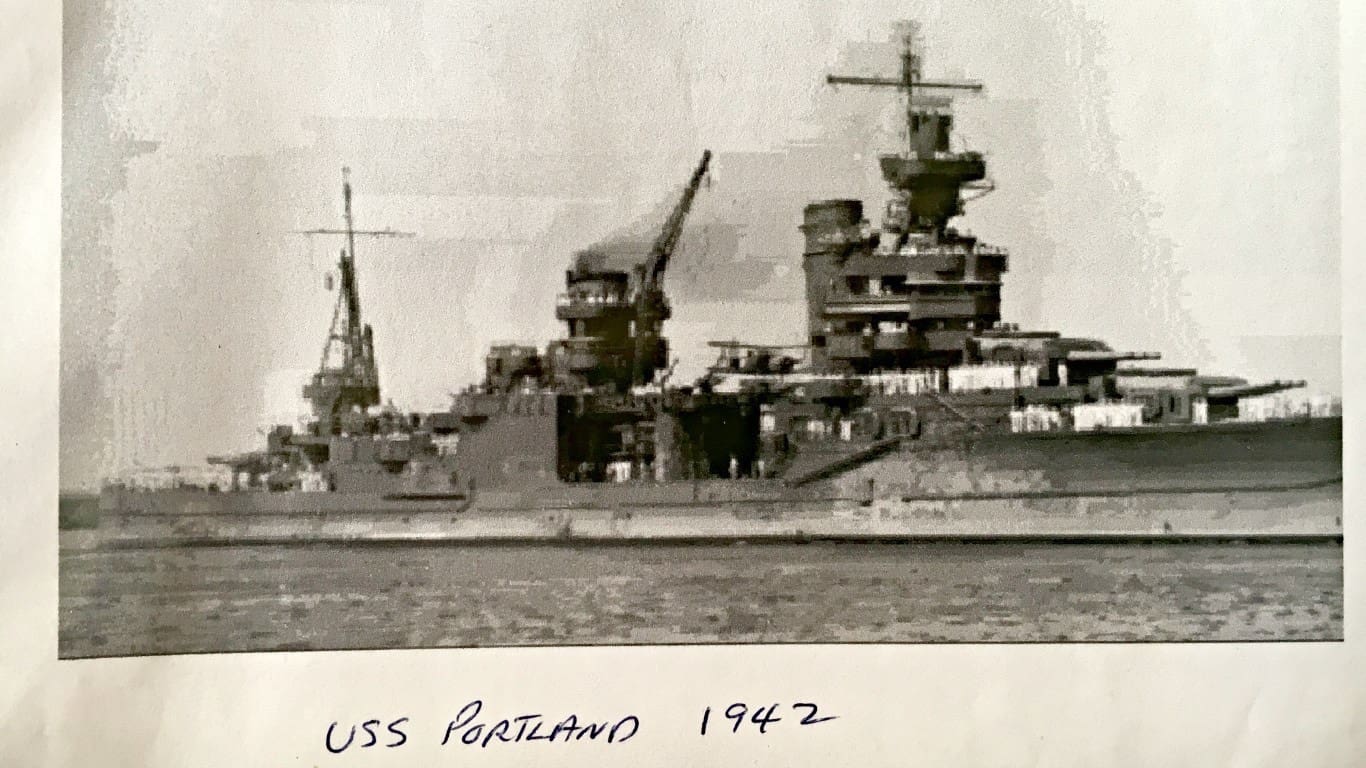
Kit Badger has just posted the first of the three part series called, “World War II Stories” which feature the accounts of his Grandfather Ray’s service in the Navy during WWII. The first one was posted today since he joined the Navy on July 4th, 1942.
kitbadger.com/world-war-ii-ray-loyd-part-1
Written by the US Army Special Operations Command Historian, this is a very interesting piece of Army Special Forces history which is sure to ruffle some feathers. I was certainly surprised by it, having always understood use of the moniker “Operator” began in the late 70s as a legal definition.
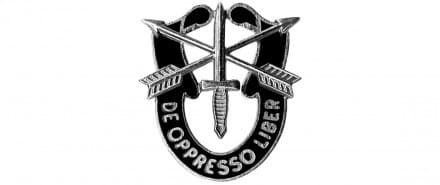
In the last fifteen to twenty years, the practice of calling a Special Forces (SF) soldier an ‘operator’ has caused considerable rancor within Army special mission units (SMU), the original of which adopted that appellation in the late 1970s. Today, all U.S. military service special operations forces and their higher headquarters apply that moniker to their sea, land, and air warfighters. Even staff personnel adopt that term for themselves. In the warfighter units this distinction clearly delineates and separates staff and support personnel from those assessed to undergo a mentally and physically tough selection course. Those that successfully achieve the rigorous standards must satisfy a leaders’ board to qualify for advanced training that could lead to operational assignments. In some SMUs psychological, physical, and mental assessments and re-evaluations are constant, hence the phrase, ‘Selection is an ongoing process.’ Regardless of the rigor applied by Special Operations Forces (SOF) elements, feelings of rancor in the ‘ranks’ of Army SOF towards the popular use of ‘operator’ are unwarranted.
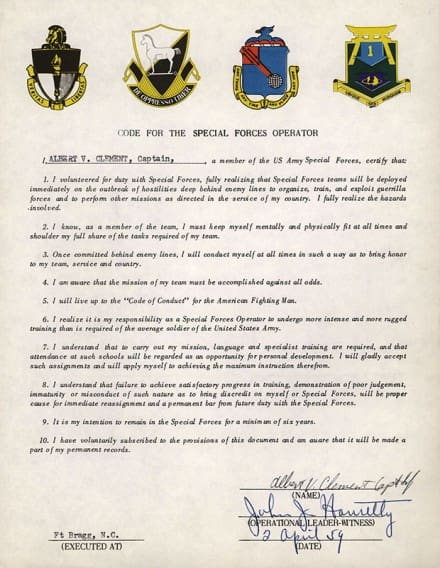
Retired MAJ Albert Valentine ‘Jake’ Clement, Official Military Personnel Record (OMPR), National Personnel Records Center, St. Louis, MO.
SF did not misappropriate the appellation. Unbeknownst to most members of the ARSOF community, that moniker was adopted by Special Forces in the mid to late 1950s. SF-qualified officers and enlisted soldiers voluntarily subscribed to the provisions of the ‘Code of the Special Forces Operator’ and pledged themselves to its tenets by witnessed signature.
This document, signed by SF-qualified Infantry Captain (CPT) Albert V. ‘Jake’ Clement, an FA Team Leader [an Operational Detachment Alpha (ODA) today] in 1st Company, 77th Special Forces Group (SFG), and witnessed by John J. Hanretty on 2 April 1959, substantiates original ownership. According to Provision 10 of the SF Operator Code, the signed certificate was to be filed in one’s Official Military Personnel Records (OMPR). The original was found in the OMPR of retired Major (MAJ) ‘Jake’ Clement, second-in-command of the 10th SFG Congo Rescue Mission in 1960.
Cross-referencing sources is a standard practice of the USASOC History Office. It is critical to verify information in interviews, memoirs, and secondary source works. Primary documentation provides official, factual information to reinforce statements and/or disprove claims. Credibility is key to USASOC historical publications ‘standing the test of time.’ And, sometimes official records have surprises like the Special Forces Operator Code. It reinforced ‘silent professionalism.’ This document ought to stir memories of early SF veterans and reduce the angst among serving ‘special operators.’
by Charles H. Briscoe, PhD // charles.briscoe@socom.mil
First published in Veritas, Vol. 14, No. 1, 2018
Military uniforms have gone through many changes during the 224 year history of the US Army. Revolutionary War uniforms for example were very fancy and colorful by today’s standards, but by the time of the Civil War in the 1860’s uniforms had become more utilitarian. And by the Spanish-American War it was noted that Teddy Roosevelt’s “Rough Riders” looked more like cowboys than soldiers.
By the beginning of the 20th Century duller natural tones had become the new standard for uniforms and when the US Army entered WWI, it was in uniforms in a brownish-green color called “Olive Drab”.
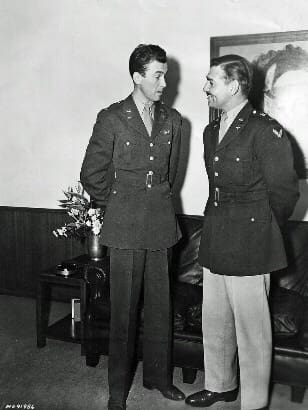
Hollywood stars Jimmy Stewart and Clark Gable wearing two versions of the 1940-Pattern Officers Service Uniform while serving as Captains in the Army Air Force during WWII. (Source: US Army, Public Domain)
By WWII, the US Army service uniform featured the subdued colors of Olive Green and Taupe. Nonetheless, the 1940-Pattern Officers’ Service Uniform possessed an easy-going elegance. It evoked the refined shooting jackets and safari suits frequently seen in Hollywood movies, and was also frequently seen being worn by movie star soldiers like James Stewart and Clark Gable. This uniform also acquired the famous “Pinks-and-Greens” nickname due to the contrasting hues of the jacket and trousers.
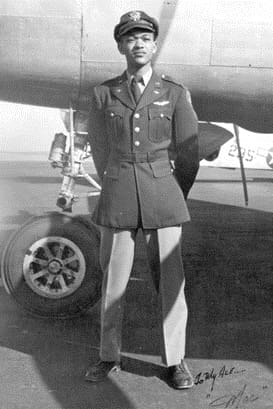
One of the original Tuskegee Airmen, Colonel Lloyd McKeethen pictured in his WWII “Pinks-and-Greens” uniform. (Source: goarmywestpoint.com/custompages/army/granddaughter)
By the end of the 1940’s however the wartime uniform had lost a great deal of its prestige, so a new look was introduced in 1954 with the “Class A”, or Dress Green Uniform. The Dress Green Uniform soldiered on through the Cold War, the Gulf Wars, and into the Global War on Terror.
Finally in 2008, the Class A Dress Greens Uniform was replaced by the blue Army Service Uniform (ASU). The ASU has however been very unpopular and it will be replaced by the new Army Service Green Uniform (AGSU) starting next year. The AGSU closely follows the style of the 1940-pattern Officers Dress Uniform – the famous WWII “Pinks-and-Greens”.
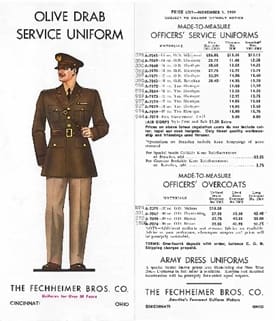
Fechheimer Brothers Company catalog from November 1941 showing fabric options and prices for private-purchase M1940-Pattern Officers’ Service Uniforms.
Flying Cross®, based in Cincinnati, Ohio was one of the original producers of the “Pinks and Greens”, and has been a leading manufacturer of uniforms for US military and law enforcement personnel for the past 175 years. Based on this long history of expertise, the Army approached the company in the spring of 2017 and has been working closely with Flying Cross ever since to roll-out the AGSU on time.
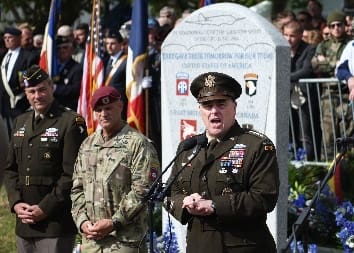
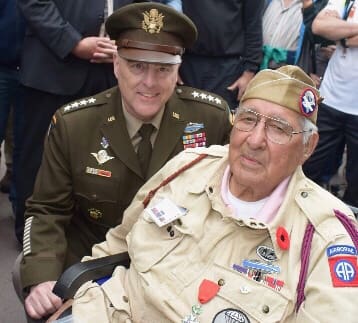
Chief of Staff of the U.S. Army, Gen. Mark A. Milley in Sainte Mere Eglise, France June 6, 2019. (U.S. Navy photos by Chief Mass Communication Specialist Michael McNabb)
AGSUs are now being issued to a cross-section of Army personnel for wear-testing and user feedback. Earlier this month, Flying Cross also delivered 500 sets of the AGSU for Officers and NCOs participating in the 75th anniversary of D-Day.
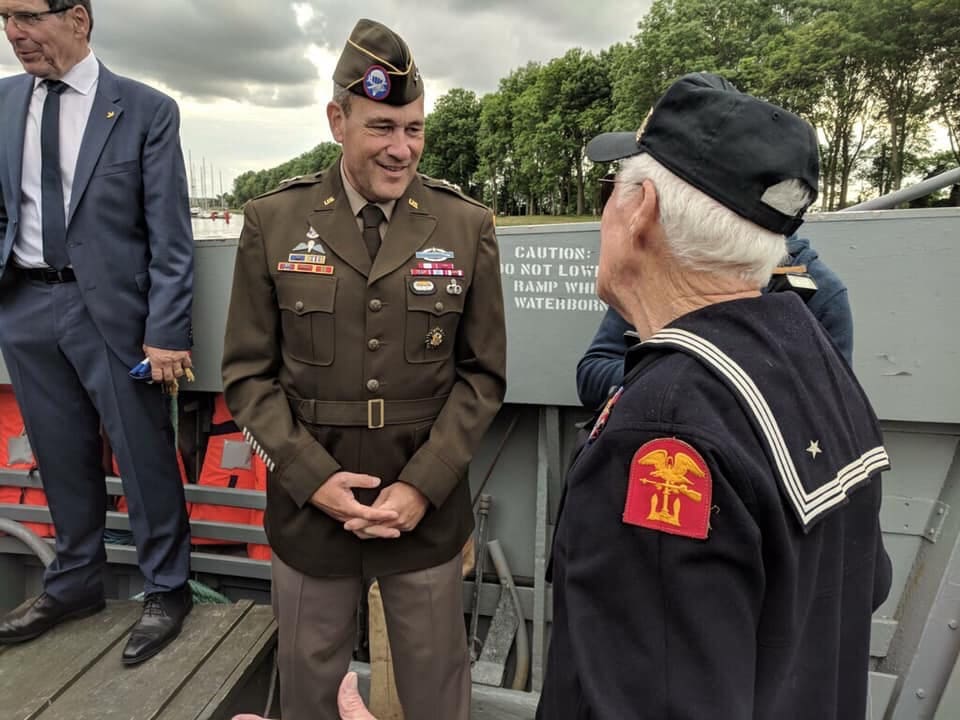
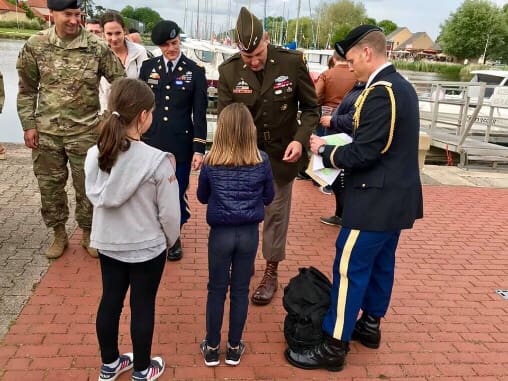
Maj. Gen. Brian Winski, 101st Airborne Division (Air Assault) at Carentan, France June 5, 2019. (US Army photos by Sgt. Steven Lopez, 101st Combat Aviation Brigade)
The Army Green Service Uniform capitalizes on the current retro style trend, includes a touch of old school Hollywood glamor, has a distinctly “American” look, and strongly connects the next generation of Soldiers with the heritage of the Greatest Generation of Soldiers.
For further information about Flying Cross and the Army Green Service Uniform, please visit www.goAGSU.com and follow Flying Cross on Instagram and Facebook.
Eugene Stoner’s #1 and prototype firearms like they have never been seen before with depth and clarity made possible by new digital camera technology.
Shared to the public for the first time, Mr. Stoner himself speaks of his personal path and a few of the stories behind some of his historic and groundbreaking designs.
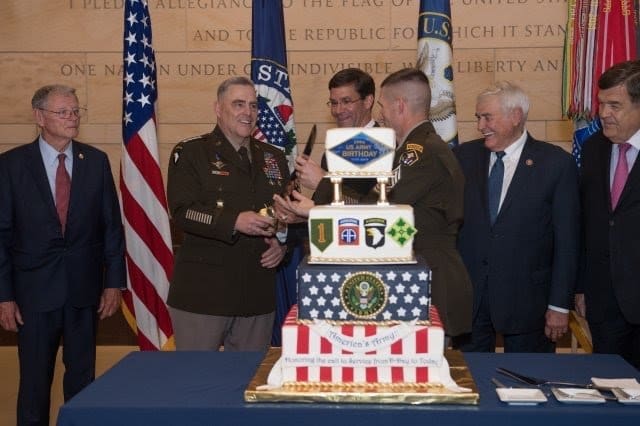
I’d like to wish all of my fellow Soldiers, past and present, a joyful 244th birthday. You’ve remained a steadfast pillar of American society, because of the men and women who have served this great nation.
US Army photo by SPC Dana Clark